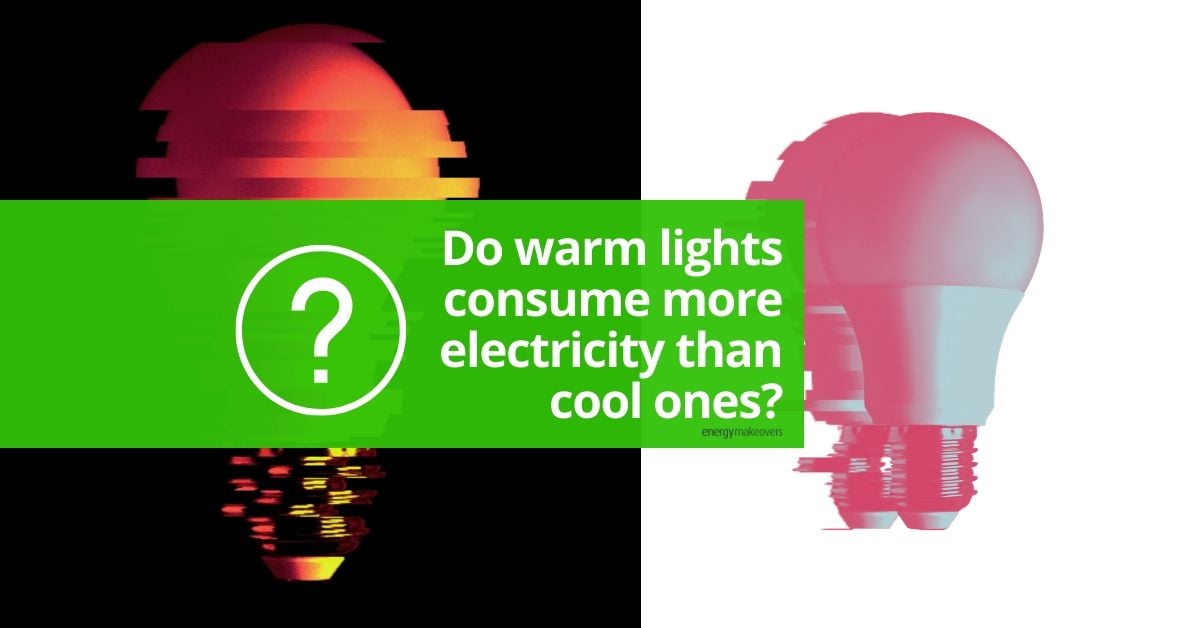
Please note: As of 1st February 2023, FREE Lighting upgrades are no longer available for Victorian homes. This is in accordance with the Victorian Energy Upgrades program (VEU).
One of our most frequently asked questions from customers is if they can upgrade their LEDs to cool white lights instead of a warm white. This might be for a myriad of reasons, but one of them has been because a customer believes that warm white LEDs use more energy than cool white LEDs. We thought we’d answer the question:
Do warm lights consume more electricity than cool ones?
To preface the answer to this question we just want to clarify that when we say ‘warm’ lights, we’re referring to the colour spectrum of the lights and not the temperature they omit. The reason for this is that if you compare 2 lights that give off the same level of light, but one is warm to the touch and the other is not, then the first, warm globe is wasting energy on heating the elements of the light and is, therefore, costing more to supply the same amount of light as the cooler globe. So, this question specifically refers to the colour of the light that is emitted.
Residential LED upgrades Commercial LED upgradesFor reference:
“Your average halogen downlight lamp, installed across Australia has a typical colour of 3,000 K. This places it in a warm, inviting range, creating a cosy atmosphere. Our LED upgrades include 3,000 K LEDs to replicate this warm environment at a fraction of the energy use of old halogens.” source
“Typical homes have lights of 3,000 K
Businesses need staff to stay alert and motivated, so a cosy atmosphere is probably best avoided and therefore 5-6000 K lights are ideal for a business.
Businesses that have high ceilings and busy staff, like warehouses, will use lights like highbays with a typical colour of 6,000 K”.
Please note: As of 1st February 2023, FREE Lighting upgrades are no longer available for Victorian homes. This is in accordance with the Victorian Energy Upgrades program (VEU).
Residential upgrades Commercial LED upgrades
While most homes opt for warm white, some opt for a cooler globe that supplies a colder white, around 4,000k. An important factor when updating your home or business to LED is the cost, not only for installation, but maintenance and energy once installed. And if your LED globes are going to demand more energy for any reason you want to know ahead of time. But, we can confirm, that the energy your LED globe will use is not based on the colour of light it emits. This means, if you have opted for a 7w LED downlight globe it doesn’t matter if it’s 3,000k or 4,000k, both globes will require the same amount of energy to produce light and therefore there is no difference in their electricity costs.
Do warm lights consume more energy than cool ones?
Warm white LEDs do not cost more to run than cool white LEDs, they use the same amount of energy.
Even better – by upgrading to LEDs with Energy Makeovers you can have the whole installation and the LEDs installed for free. So you can upgrade your outdated lighting throughout your home or business upgraded to LED for free.
What have you got to lose, but energy costs?
Do warm white lights use more energy than cool ones?
Warm white (colour) LEDs do not cost more to run than cool white LEDs, they use the same amount of energy.
Do lights that produce heat cost more to run than cool ones
Yes, because a lot of the energy is used heating the elements of the globe and less on lighting it. So to achieve the same level of brightness it would need to use a lot more energy.


